The truth is that you can’t burn fat from just one spot on your body. That’s a myth that won’t die. But you can do two things that work together that will produce results. Build strong core muscles underneath that fat. Burn calories to reduce overall body fat. When you do both, your waistline transforms.
The best part is that you need only 10 minutes a day. No gym. No equipment. Just your body and a small space in your living room.
What Science Says About Short Workouts
Core Training Builds Muscle, Not Spot Reduction: A 2011 study in the Journal of Strength and Conditioning Research tracked people doing ab exercises for six weeks. Their core strength jumped by 58%. But their belly fat? It didn’t change from exercise alone. The takeaway: Core work builds the muscle. Diet reveals it.
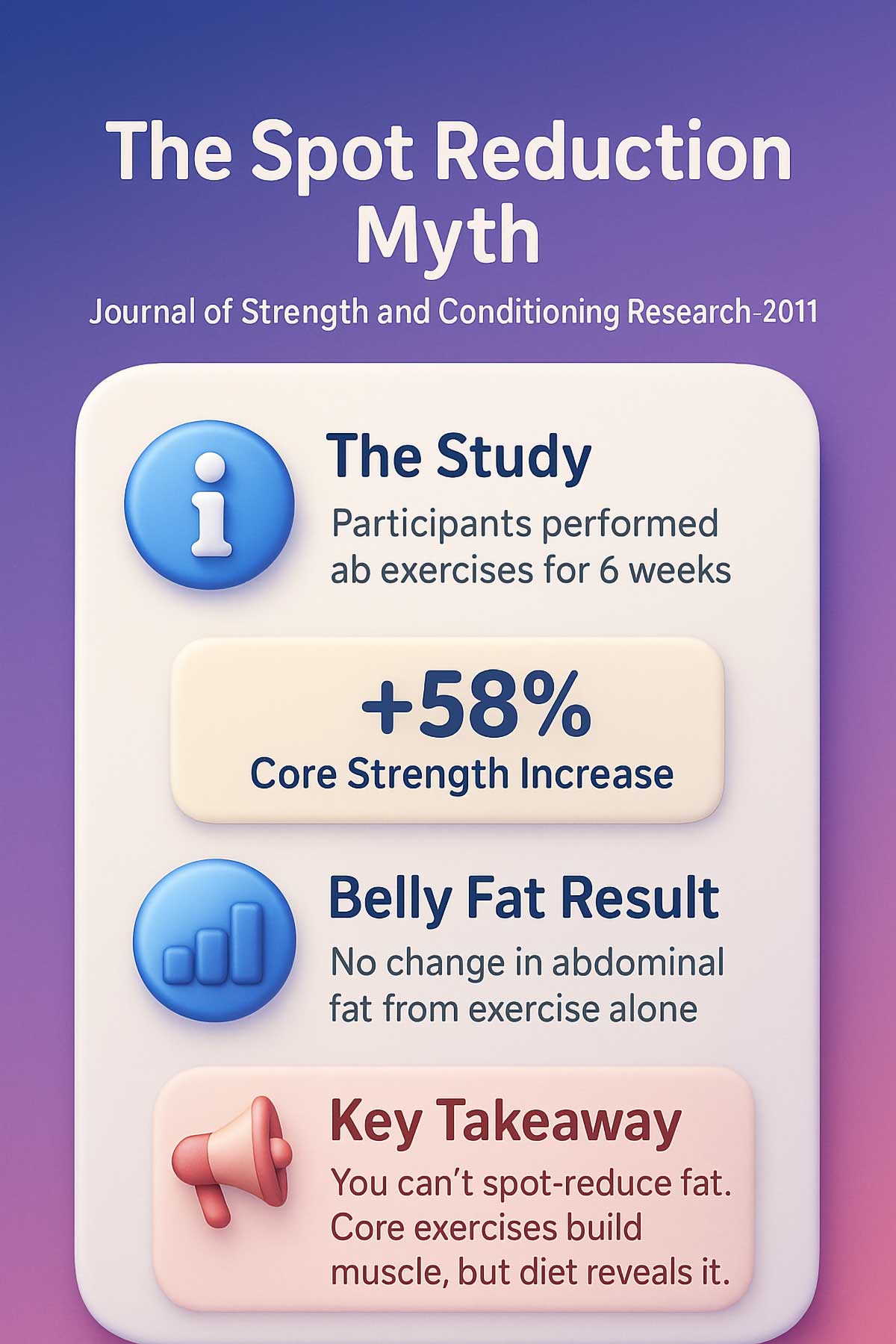
Bodyweight Circuits Burn Serious Calories: Research published in the Journal of Sports Science and Medicine in 2019 found that bodyweight circuits with no equipment can push your heart rate above 85% of your max capacity. That level of intensity supports serious calorie burn and improves overall fitness over time.

The Right Moves Matter: A 2015 study using muscle sensors showed that exercises with twisting and side movements activate the obliques far more than standard crunches. Those obliques create the defined waistline most people want.

Let’s get started.
Myths That Keep You From Results
❌ MYTH: Doing 1,000 crunches will melt belly fat
✓ TRUTH: You can’t spot-reduce fat. Core exercises build muscle underneath. Total body fat loss reveals that muscle.
❌ MYTH: You need gym equipment for effective core training
✓ TRUTH: Your body provides all the resistance you need. Bodyweight moves can be just as effective as machine exercises.
❌ MYTH: More exercise always means better results
✓ TRUTH: Recovery matters. Your muscles grow stronger during rest, not during the workout itself.
❌ MYTH: Abs are made in the gym
✓ TRUTH: Abs are revealed in the kitchen and built in your workout. You need both.
Your 10-Minute Core-Strengthening Circuit
Here’s how this works. You’ll do five exercises. Perform each one for 45 seconds. Rest for 15 seconds between moves. When you finish all five, that’s one circuit. Rest for 30 seconds. Then repeat the entire sequence. Two circuits equal 10 minutes total.
This structure keeps your heart rate up. It challenges your muscles. It fits into any schedule. Morning coffee break? Done. Lunch hour? Perfect. Before bed? Absolutely.
A 2020 review in Sports Medicine analyzed dozens of studies and found something powerful: People who combined aerobic activity with resistance training lost more inches from their waist and dropped more body fat than those who did just one type. Your 10-minute routine delivers both benefits at once.
Quick-Reference Workout Table
| Exercise | Duration | Rest | Target Muscles | Difficulty |
|---|---|---|---|---|
| Bicycle Crunches | 45 sec | 15 sec | Obliques, Rectus Abdominis | Beginner-Friendly |
| Side Plank with Hip Dips | 45 sec | 15 sec | Obliques, Transverse Abdominis | Intermediate |
| Russian Twists | 45 sec | 15 sec | Obliques, Hip Flexors | Beginner-Friendly |
| Mountain Climbers | 45 sec | 15 sec | Full Core, Shoulders | Intermediate |
| Leg Lifts with Hip Raise | 45 sec | 15 sec | Lower Abs, Obliques | Intermediate |
| Circuit Rest | 30 sec | – | – | – |
Repeat 2x for 10 minutes total
Consistency beats perfection. Do this routine five days a week. Your core will get stronger. Your posture will improve. Over time, with smart eating choices, those love handles will shrink.
The 2-Minute Warm-Up You Can’t Skip
Cold muscles don’t perform well. Spend 2 minutes preparing your body. This reduces injury risk and helps you get more from each exercise.
- March in place: 30 seconds (gets blood flowing)
- Arm circles: 15 seconds each direction (warms shoulders for planks)
- Torso twists: 30 seconds (prepares obliques for rotation)
- Cat-cow stretches: 30 seconds (mobilizes your spine)
Research on core stability training published in the British Journal of Sports Medicine showed that proper preparation and controlled movements improve trunk strength and postural control. Don’t skip this step.
1. Bicycle Crunches: The Ultimate Oblique Activator
Your obliques run along the sides of your core. They create that defined waistline look. Bicycle crunches hit these muscles harder than regular crunches. Studies using muscle sensors show that twisting moves activate the obliques way more than straight-up-and-down crunches.
How to Do It
Lie on your back. Put your hands behind your head. Bend your knees at 90 degrees. Lift your shoulders off the floor. Bring your right elbow toward your left knee. At the same time, straighten your right leg. Switch sides in a smooth pedaling motion. Keep alternating for 45 seconds.
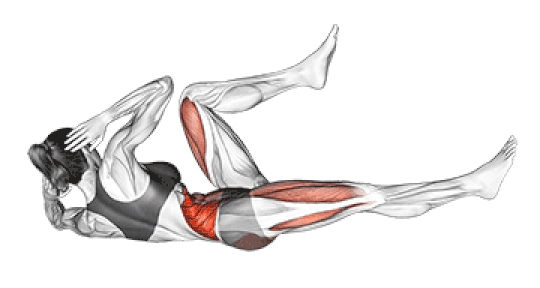
Pro Tip
Twist from your torso, not your neck. If your neck hurts, you’re pulling with your hands instead of rotating with your core.
Beginner Modification
Keep your feet on the floor. Just practice the twisting motion without the leg extension.
Advanced Challenge
Slow down the movement. Pause for 2 seconds at each twist. This increases time under tension and builds more strength.
2. Side Plank with Hip Dips: Carve Your Waistline
Side planks are a powerhouse for your obliques. They force these muscles to work hard to keep your body stable. Adding hip dips makes them even better. You’re not just holding still. You’re creating dynamic movement that builds strength and endurance.
A 2015 study in the Journal of Physical Therapy Science compared different core exercises. Side planks showed the highest activation of the oblique muscles and deep core stabilizers. That makes them perfect for waistline definition.
How to Do It
Start in a side plank on your right elbow. Stack your feet or place one in front of the other for more stability. Keep your body in a straight line from head to heels. Lower your right hip toward the floor slowly. Raise it back up higher than your starting position. Control the movement. Don’t just drop your hip.
For your first circuit, stay on the right side. For your second circuit, switch to the left.
Pro Tip
Don’t let your hips sag. Brace your core like someone’s about to poke your stomach. That tension protects your lower back and makes the move more effective.
Beginner Modification
Drop your bottom knee to the floor for support. You’ll still work your obliques but with less strain.
Advanced Challenge
Add a top leg lift. Raise your top leg as you dip your hip. This increases the stability challenge.
3. Russian Twists: The Core-Tightening Classic
Rotation is a natural human movement. You twist to grab something behind you. You turn to look over your shoulder. Russian twists train this pattern. They work your entire core while giving extra attention to your obliques.
How to Do It
Sit on the floor. Bend your knees and lift your feet slightly off the ground. Lean back to a 45-degree angle. Keep your back straight, not rounded. Clasp your hands together in front of your chest. Twist your torso to the right and touch your hands to the floor beside your hip. Twist to the left and touch down on that side. Keep alternating.
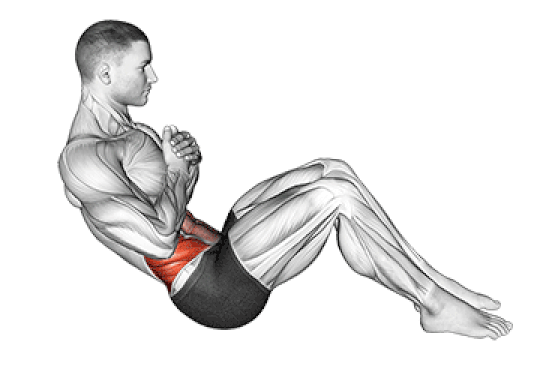
Pro Tip
Hold a water bottle or heavy book for more challenge. As you get stronger, you can add weight. But perfect form matters more than added resistance.
Beginner Modification
Keep your feet on the floor. This gives you more stability as you build core strength.
Advanced Challenge
Extend your arms fully while holding a weight. The longer lever makes your core work harder.
4. Mountain Climbers: Burn Calories and Build Stability
This move does double duty. It spikes your heart rate to burn calories. It forces your core to work overtime to keep your body stable. That combination makes it perfect for losing fat while building muscle.
The 2019 study on bodyweight circuits found that moves like mountain climbers can push your cardiovascular system hard enough to improve overall fitness. That means better endurance and more calories burned throughout the day.
How to Do It
Start in a high plank position. Hands under shoulders. Body in a straight line. Drive your right knee toward your chest. Quickly switch and drive your left knee forward. Continue this running motion. Keep your hips low and your back flat.
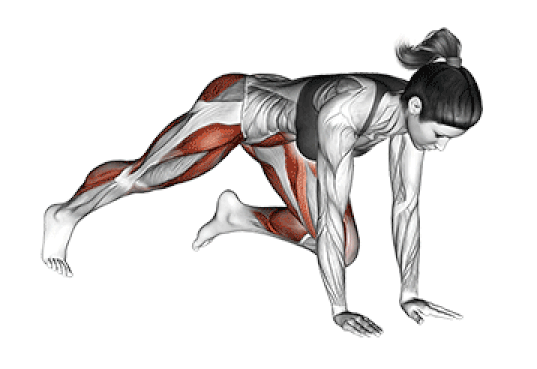
Pro Tip
Go fast for cardio benefits. Go slower and more controlled to focus on core stability. Both work. Pick the version that matches your energy level that day.
Beginner Modification
Slow the pace way down. Focus on bringing one knee up, placing it back down, then bringing the other knee up. No jumping or running motion needed.
Advanced Challenge
Add a push-up between every four mountain climbers. This turns it into a full-body strength builder.
5. Leg Lifts with Hip Raise: Target the Lower Abs and Obliques
People often think of leg lifts as a lower ab exercise. They’re right, but there’s more to it. When you add a hip raise at the top, your obliques kick in to stabilize the movement. You get a complete core workout from one move.
How to Do It
Lie on your back. Place your hands under your lower back for support or flat on the floor beside you. Keep your legs straight. Slowly raise them toward the ceiling until they’re straight up. Push further by lifting your hips off the floor in a small, controlled pulse. Lower your legs back down without letting them touch the floor. That keeps tension on your core the entire time.

Pro Tip
Exhale as you lift your hips. This deepens the core contraction and helps you generate more power from your abs.
Beginner Modification
Bend your knees slightly. This reduces the load on your lower back and makes the move more manageable.
Advanced Challenge
Lower your legs to just 6 inches off the floor instead of returning to vertical. This keeps constant tension on your abs.
10-Minute Core Circuit
Follow along with audio cues
Common Mistakes That Sabotage Your Results
Even the best routine fails if you’re making these errors. Here’s how to fix them.
| Mistake | Why It Hurts You | The Fix |
|---|---|---|
| Holding your breath | Reduces core engagement, spikes blood pressure | Exhale during effort, inhale during release |
| Rushing through reps | Poor form, less muscle activation | Control beats speed every time |
| Skipping the warm-up | Higher injury risk | Do 2 minutes of marching in place first |
| Same intensity every day | Your body adapts and stops changing | Vary your speed and rest periods weekly |
| Ignoring pain signals | Can lead to injury | Stop if you feel sharp pain, not just muscle burn |
| Arching your lower back | Puts stress on your spine | Pull your belly button toward your spine |
| Moving from momentum | Muscles don’t work as hard | Pause briefly between reps to reset |
Beyond the 10 Minutes: The Lifestyle Tweaks That Make a Difference
Exercise builds the muscle. But lifestyle choices reveal it. You can’t out-train a bad diet or poor sleep. The good news? Small changes add up fast.
Simple Nutrition Swaps
Add protein to each meal. Eggs for breakfast. Chicken or beans for lunch. Fish for dinner. Protein helps you feel full longer. It also supports muscle recovery. Swap sugary drinks for water. That one change can cut hundreds of calories per day. You don’t need a complex diet plan. Just eat real food most of the time.
Simple Meal Building Guide
| Meal | Protein (palm-sized) | Vegetables (2 fists) | Healthy Fat (thumb-sized) | Complex Carbs (cupped hand) |
|---|---|---|---|---|
| Breakfast | Eggs, Greek yogurt | Spinach, tomatoes | Avocado, nuts | Oats, whole wheat toast |
| Lunch | Chicken, fish, tofu | Mixed greens, peppers | Olive oil, seeds | Brown rice, quinoa |
| Dinner | Lean beef, salmon | Broccoli, carrots | Olive oil, avocado | Sweet potato, beans |
| Snacks | Protein shake, cottage cheese | Celery, cucumber | Nut butter | Apple, berries |
Portion sizes are general guides. Adjust based on your height, weight, and activity level.
The Power of Walking
Add a 20-minute walk to your day. Walk during lunch. Take a stroll after dinner. Walking burns calories without beating up your body. It’s low impact. It reduces stress. It gets you outside.
The 2020 research review mentioned earlier found that combining walking (aerobic activity) with resistance training led to better results than either one alone. People in the combined group lost more inches from their waist and dropped more total body fat.
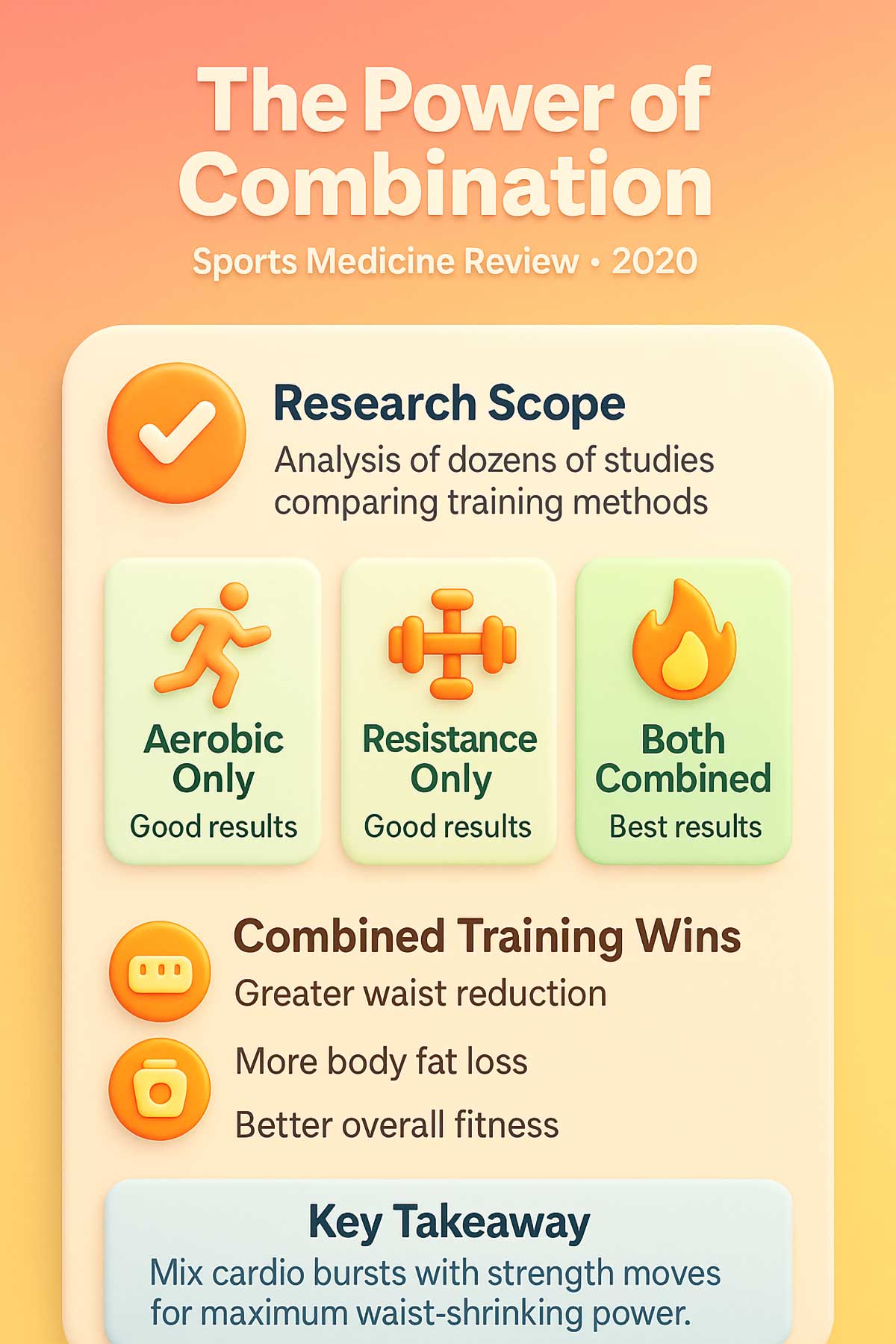
Prioritize Sleep
Poor sleep raises cortisol, a stress hormone. High cortisol tells your body to store fat, especially around your belly. Aim for seven to eight hours of sleep each night. Keep your bedroom cool and dark. Put your phone away an hour before bed. Good sleep supports fat loss in ways exercise alone can’t match.
Your First Week: A Day-by-Day Plan
Remove the guesswork. Here’s exactly what to do.
| Day | Workout | Additional Activity | Nutrition Focus |
|---|---|---|---|
| Monday | 10-Min Circuit | 20-min walk | Add protein to breakfast |
| Tuesday | 10-Min Circuit | Rest or stretch | Drink 8 glasses of water |
| Wednesday | 10-Min Circuit | 20-min walk | No sugary drinks |
| Thursday | Rest Day | Light stretching | Focus on vegetables |
| Friday | 10-Min Circuit | 20-min walk | Meal prep for weekend |
| Saturday | 10-Min Circuit | Active hobby | Enjoy a treat mindfully |
| Sunday | Rest Day | Plan next week | Prep healthy snacks |
Your core needs recovery time like any muscle group. Aim for 5 days per week with 2 rest days. On rest days, light walking or stretching is perfect.
A 2007 study in Evidence-Based Complementary and Alternative Medicine found that short-duration routines of 10 to 15 minutes improved abdominal endurance and mobility when people did them consistently. The key word: consistently.

What to Expect: Your 8-Week Timeline
Managing expectations keeps you motivated through the tough early weeks.
Week 1-2: The Adjustment Phase
You’ll feel muscle soreness. That’s good. It means you’re working muscles that have been sleeping. Your energy may dip as your body adjusts. Some people feel tired after the first few workouts. Push through. This phase passes quickly. Stay consistent.
Week 3-4: The Strength Phase
Exercises feel easier. You can hold planks longer. Mountain climbers don’t gas you out as fast. You might notice better posture throughout the day. Sitting up straight takes less effort. This is when most people start to enjoy the routine.
Week 5-6: The Visual Changes Begin
This is exciting. Clothes fit differently around the waist. You might notice your belt needs a tighter notch. Core feels noticeably stronger during daily tasks. Picking up heavy bags or playing with kids gets easier. Friends might start asking if you’ve lost weight.
Week 7-8: The Definition Phase
Visible muscle definition emerges. This assumes you’ve been smart with nutrition. You can complete both circuits with better form and less fatigue. The routine that felt brutal in week one now feels manageable. You’re ready to add more challenge.
Build on Your Success
Once you’ve mastered this 10-minute routine, keep challenging yourself. Your body adapts fast. After 8 weeks, try these progressions:
- Add a third circuit (15 minutes total)
- Increase work time to 50 seconds, decrease rest to 10 seconds
- Try advanced variations of each exercise
- Add a second daily session (one in the morning, one at night)
- Combine this routine with full-body strength training
- Try core exercises for lower back pain relief
- Learn proper stretches for tight hip flexors
- Start meal prep for fat loss
- Begin beginner strength training at home
Want this routine on one page? Write it down on a notecard and stick it on your wall. No phone or screen needed during your workout. Just you, your body, and 10 minutes of focused effort.
Conclusion
You don’t need a gym membership. You don’t need hours of free time. You need 10 minutes a day and the commitment to show up. This routine works because it combines core-strengthening moves with calorie-burning intensity.
Science backs up the approach. The 2011 study showed that core exercises increase strength significantly. The 2019 research proved that bodyweight circuits can improve overall fitness. The 2015 study demonstrated that twisting movements activate the obliques better than standard crunches. The 2020 review confirmed that combining aerobic work with resistance training delivers the best results for waist reduction.
Will you see results overnight? No. But in four to six weeks of consistent effort, you’ll notice changes. Your posture will improve. Your clothes will fit better. Your core will feel stronger. Those love handles? They’ll start to fade.
The best workout is the one you actually do. Ten minutes is doable. Ten minutes is sustainable. Ten minutes, done five days a week, is your path to a stronger core and a more defined waistline.
Your Action Plan for Tomorrow Morning
Don’t just read this and forget it. Take action now.
- Set your alarm 15 minutes earlier than usual
- Put your workout clothes next to your bed
- Clear a small space in your living room
- Read through the exercises one more time
- Do the 2-minute warm-up tomorrow
- Complete your first circuit (don’t worry about the second one yet)
- Take a photo of yourself for your “before” reference
- Mark your calendar for the same time the next day
FAQs
Can I do this workout every day?
Your core needs recovery time like any muscle group. Aim for 5 days per week with 2 rest days. On rest days, light walking or stretching is perfect. Muscles grow stronger during rest, not during the workout itself.
Will this routine give me visible abs?
It will strengthen your core muscles. Visible abs depend on your body fat percentage. Most men need to get below 15% body fat. Most women need to get below 20%. Combine this routine with proper nutrition and you’ll see results over 8-12 weeks.
What if I can’t complete 45 seconds of an exercise?
Start with 30 seconds and build up. Form matters more than duration. Take a 5-second break mid-exercise if needed, then continue. You’ll get stronger each week.
Should I do this before or after cardio?
Either works. If you’re doing intense cardio, do this routine after. Your core needs to be fresh to support you during heavy cardio. If you’re just walking, the order doesn’t matter much.
I have lower back pain. Is this safe?
Check with your doctor first. Modified versions of these exercises can actually help back pain by strengthening your core. A strong core supports your lower back. Avoid exercises that cause sharp pain. Discomfort is normal. Sharp pain is a stop sign.
The 2008 study in the British Journal of Sports Medicine on core stability found that proper core training improved trunk control and reduced lower back strain. But always get medical clearance first.
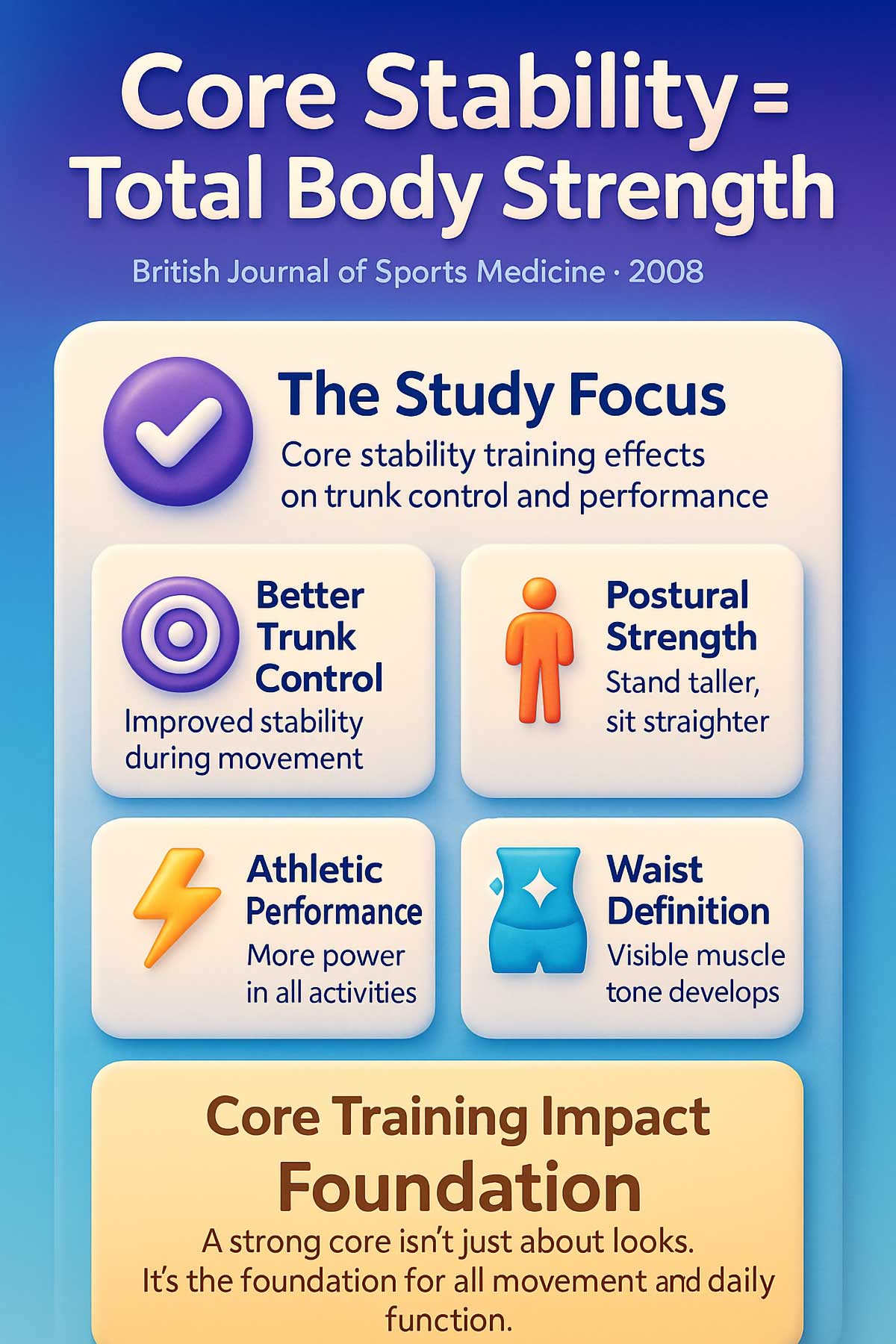
How soon will I see results?
Most people notice strength improvements in 2-3 weeks. You’ll be able to do more reps or hold positions longer. Visual changes typically appear around week 5-6 when combined with proper nutrition. Be patient. Real change takes time.
Can I do other ab exercises on my rest days?
Rest means rest. Your muscles repair and grow on off days. Light activity like walking or yoga is fine. But don’t do intense ab work. You’ll just slow your progress.
What if I miss a day?
Don’t stress. Just pick up where you left off the next day. One missed workout won’t ruin your progress. A week of missed workouts will. Get back on track as soon as you can.
Do I need to count calories?
Not necessarily. Focus on protein at each meal. Cut out sugary drinks. Eat mostly whole foods. That simple approach works for most people. If you’re not seeing results after 6 weeks, then you might need to track calories more carefully.
Can I do this if I’m over 50?
Yes. These are low-impact bodyweight moves. They’re actually perfect for older adults who want to build core strength. Start with the beginner modifications. Build up slowly. Core strength becomes more important as you age, not less.
Disclaimer: Consult your doctor before starting any new exercise program, especially if you have existing health conditions, are pregnant, or have been inactive for a long time. This article provides general information and is not a substitute for professional medical advice.


